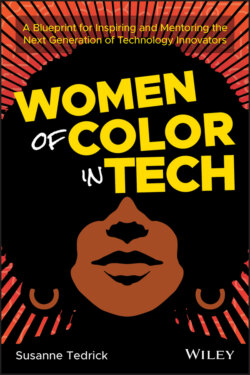Читать книгу Women of Color in Tech - Susanne Tedrick - Страница 11
College
ОглавлениеAs young women of color get ready to attend college, they are often at a financial, academic, and general support disadvantage compared to their white peers.
Despite the belief that there are many scholarships for students of color, they are hard to get and are not a given, as there could be hundreds of qualified applicants that a scholarship committee can choose from and they often require copies of academic transcripts, recommendations, minimum test scores on the SAT or ACT, and essays for consideration. Pulling together an application for just one scholarship can be very time-consuming (remember, they still have to go to class and apply to colleges, too), and the expense of transcript fees can add up.
In addition, students of color receive less private scholarship money overall than their white peers. Per a 2011 study published by the popular financial aid websites Fastweb and FinAid.org, although white students represented only 62 percent of the overall population of American colleges and universities, they received 76 percent of the overall private merit institutional aid and grants. This is likely since white students may satisfy GPA requirements, as well as participate in extracurricular activities that are of interest to sponsors, versus students of color. While colleges and universities do have need-based financial aid programs that include grants, college aid officers may include a significant number of loans to offset the costs.
Speaking of loans, while many students are eligible for lower-cost federal loans, most young women of color may have one or more part-time jobs to subsidize both their education and their basic needs, as federal-loan funding is limited, and they may not be able to obtain private student loans or rely on relatives. In a study by the National Association of Education Statistics, 85 percent of Black and American Indian/Alaska Native students and 80 percent of Hispanic students received any type of grant. Additionally, 72 percent of Black students received any type of loan—more than any other racial group.
Academically, young women of color may not be adequately prepared for the rigor of some foundational college courses. As mentioned earlier, many US public schools lack college prep–level STEM courses, increasing the likelihood that young women of color haven't gained the knowledge and skills needed to prepare them for college-level courses, let alone courses in STEM.
Coupling this with a professor's biases, a lack of meaningful support at home or within their community, and few to no peers with whom they can identify in their academic programs, many young women of color struggle to get through their programs. In a study by the College Board, of the total number of female students who entered STEM academic program in the United States in 1995 (a low 15 percent), only 4 percent graduated with a four-year degree, indicating that they may have decided to change paths during that time. For the total number of Black students (21 percent), only 3 percent of graduates finished with a four-year degree in STEM.
This makes these young women likelier to take longer to complete their programs, switch to a non-STEM major, or drop out entirely.
